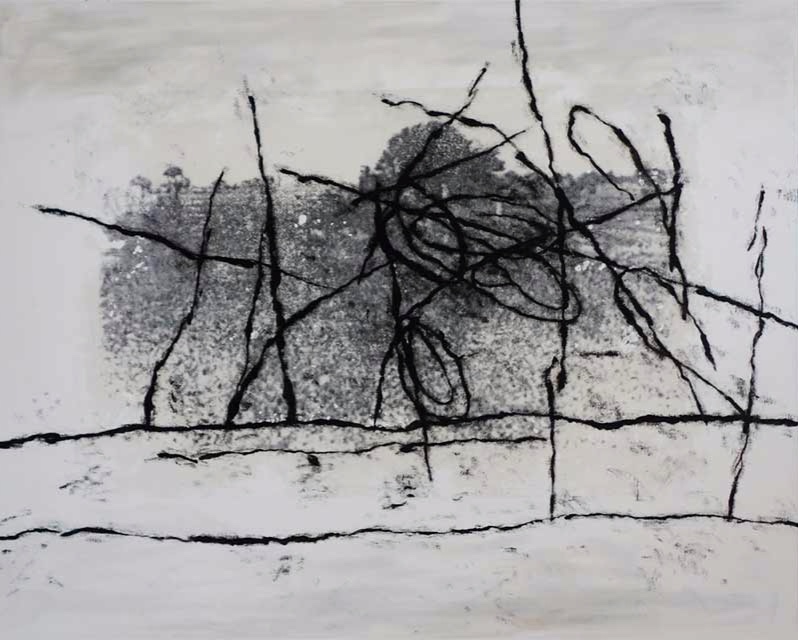ArtDaily
April 23 2019
NEW YORK, NY.- FreedmanArt is presenting Walls and Occupied Spaces, new paintings by Kit White, opening April 16, 2019. The spaces in these paintings exist as metaphorical landscapes occupied by linear structures derived from both the organic and inorganic. Kit White's new work incorporates photographic images into his paintings as poignant backdrops to abstract lines. The photograph provides a material, worldly context for the drawing, which, though abstract, represents the real as an analog mark. This new series of works seek out images of land that have been scarred by conflict. Initially, the images were of contested spaces of what we have traditionally referred to as the Middle East, places where competing claims to land have led to war-like confrontations. Conflicts of all kinds, violent and non-violent, surround us and announce themselves through walls, barriers, and borders. These collisions, not always physical, are manifestations of the fraught politics of occupation, both actual and symbolic. The artist also found himself drawn to the photographs of Matthew Brady (1822 - 1896) and others of the Civil War, and meditating on the figurative wall born of that conflict, a psychological division that continues to separate us. view as [pdf]
Kit White






